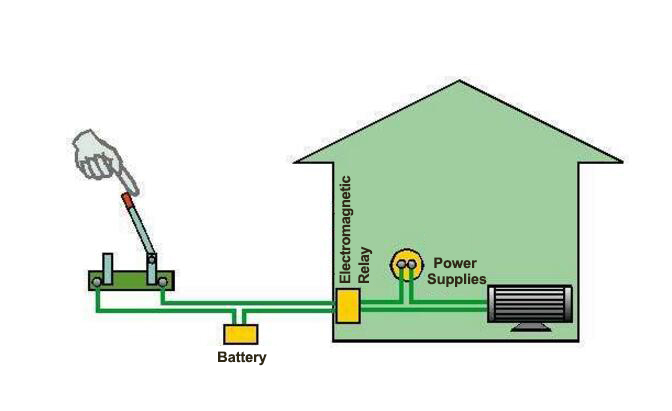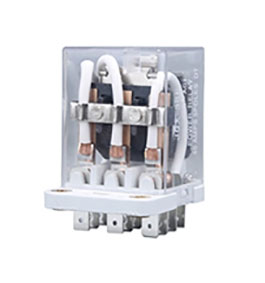Why Do We Need Electromagnetic Relays?
Electromagnetic relays are key components in electrical engineering and play an important role in a variety of applications. From home appliances to industrial automation systems, electromagnetic relays provide the necessary functions for circuit control and switching operations. In this article, ATO.com looks at why we need electromagnetic relays and the importance of electromagnetic relays.
Household Applications
Electromagnetic relays are used in household appliances such as washing machines, refrigerators, air conditioners, and microwave ovens. Electromagnetic relays are responsible for controlling the switching and operation of different electrical components to ensure the proper functioning of the equipment. Electromagnetic relays can also be used to prevent overloads and circuit failures, thus increasing the safety of the equipment. In-home lighting systems and electromagnetic relays are used to control the on/off and brightness of lights. Electromagnetic relays allow lamps to automatically turn on and off when needed, as well as dimming functions, thereby improving energy efficiency.
Doorbell systems typically use electromagnetic relays to trigger ringing and doorbell sounds. When someone presses the doorbell button, the electromagnetic relay closes the circuit and triggers the ringing of the bell. Electromagnetic relays play a key role in home security systems for controlling the operation of door locks, smoke detectors, security cameras, and alarm systems. Electromagnetic relays can be remotely operated to improve home security.

Industrial and Commercial Applications
Industrial automation systems often use electromagnetic relays to control machines, production lines, and industrial equipment. Electromagnetic relays enable automated processes to be switched on and off and controlled to improve productivity and quality. Electromagnetic relays in power systems are used to monitor and control power distribution to ensure reliable distribution of power and protect circuits from problems such as short circuits and overloads.
Traffic signal systems use electromagnetic relays to control the operation of traffic signals, which ensures that traffic signals are switched in a predetermined pattern to manage traffic flow and improve road safety. In commercial and industrial buildings, electromagnetic relays are used to control the operation of refrigeration and air conditioning systems. Electromagnetic relays can start and stop refrigeration equipment as needed to maintain proper temperature and humidity.
Medical Applications
Medical equipment, such as X-ray machines, MRI machines, and EKG machines, often require electromagnetic relays to control their operation. These relays are used to ensure that the equipment operates as instructed by the doctor or technician. Electromagnetic relays are used for elevation and angle adjustments on medical beds and hospital beds to help healthcare professionals adjust the bed to meet the needs of the patient. Medical monitoring systems use electromagnetic relays to monitor the operation of devices such as vital signs, drug delivery, and ventilators. The good quality relays ensure that these devices can accurately monitor and process patient data.
Importance of Electromagnetic Relays
- Circuit Control: Electromagnetic relays can be used to control the on-off operation of a circuit. By engaging or releasing electrical contacts when the coil is energized, the relay can switch the current to control the operation of the device or circuit to which it is connected.
- Remote Operation: Electromagnetic relays can be operated remotely, allowing the operator to control the circuit without direct contact with the equipment. This is particularly useful in automated systems and remote monitoring.
- Safety and Protection: Electromagnetic relays can be used to protect circuits and equipment from overloads, short circuits, and other faults, and can quickly cut off circuits to prevent potential danger and damage.
- Multiple Applications: Electromagnetic relays are widely used in a variety of applications, including household appliances, industrial equipment, traffic signals, power systems, medical equipment, and more.
- Stability and Reliability: Electromagnetic relays usually have stable performance and long life, and work reliably under various environmental conditions, whether in high temperature, low temperature, humid, or dry environments.
- Automation and Intelligence: Electromagnetic relays can be integrated into automation systems for automatic control and monitoring, helping to improve productivity, energy efficiency, and system intelligence.
- Traditional and Modern: Although the development of electronics has brought about new types of solid-state relays, electromagnetic relays still have an irreplaceable position in many traditional and specialized applications, and the combination with modern technology provides stable and reliable circuit control for a wide range of applications.
The importance of electromagnetic relays in electrical engineering cannot be underestimated. The electromagnetic relay provide critical circuit control and switching functions for a wide range of applications, ensure the proper functioning of electronic equipment and systems, and play a key role in safety, automation, and reliability. As technology continues to advance. As a result, electromagnetic relays continue to be an indispensable component in electrical engineering, providing stable and reliable circuit control in a wide range of industries.

